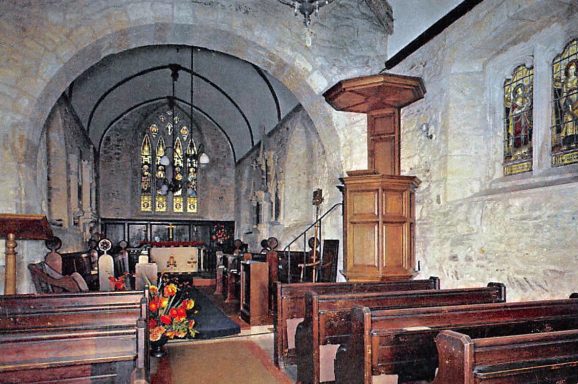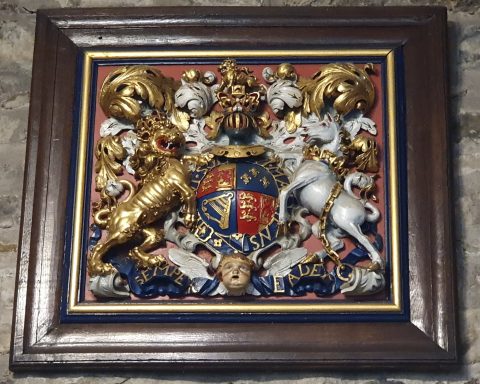Preserving the past and heritage of this wonderful village at the heart of the New Forest
St Nicholas Church
The oldest church in the New Forest
St Nicholas Church is on a hill in Church Lane, half a one kilometre to the North East of Brockenhurst. It is recognised as the oldest church in the New Forest, with a rich history spanning over a millennium.
Early Origins and Saxon Roots
Christian worship at the St Nicholas Church site dates back to at least AD 737. The Domesday Book of 1086 records the church in “Broceste” (the Norman name for Brockenhurst). It the only New Forest church mentioned in the survey. The church's location on a mound suggests it may have been a sacred site even before Christianity, possibly used for pagan or Roman worship, though there is no firm evidence.
Development
The original Norman nave was constructed in the 12th century, followed by the addition of a chancel and south porch in the late 13th century. The church was historically linked to Christchurch Priory, serving as a chapelry under its jurisdiction. Following the Dissolution of the Monasteries in 1539, the church's patronage changed hands, eventually being acquired by Lord of the Manor, Edward Morant in 1709, whose descendants continue to hold the advowson today.
Brockenhurst lay at the heart of a royal hunting forest. King William II (William Rufus who was killed in 1100 in a hunting accident nearby) issued two royal warrants from Brockenhurst and is likely to have worshiped at the church. A mystery surrounds another relic, and armorial (shield) of Queen Anne. It is contemporaeneous with her reign (1702-1714) It is not clear how, or why this prized possession ended up in St Nicholas Churh and whether it was a direct gift following a visit.
For two centuries St Nicholas sat as a chapelry beneath Boldre Church in order of importance, and a curate held the services. The Morant’s petitioned for it to become a full church in its own right in 1866 when it first appointed its own vicar, which continues until today.
Architectural Evolution
The church, which is listed as a Grade 2* building, has undergone several modifications over the centuries:
- A west tower was added in 1758-63 to replace a previous unsafe structure.
- A north aisle was built in 1832.
- Restorations took place in 1896, 1908 (when a second vestry was added), and 1995.
These changes have resulted in a blend of architectural styles, combining Norman, Gothic, and later elements. The church is constructed from rubble stone with stone dressings and features tile roofs.
The font is made from Purbeck marble and has a square late 12th-century bowl. The circular central and angle shafts are modern.
Wartime Significance
During the First World War, Brockenhurst hosted an Indian War Hospital until 1916 and then the New Zealand No 1 General Hospital, and many soldiers were treated from the Western Front. Those who didn’t survive (just over 100 out of 24,000 patients, including 93 from New Zealand) are buried in an official War Cemetery which is part of the Churchyard. St Nicholas’ Church commemorates this history with a display about the “Tin Town” hospital and a roll of honour for local soldiers who served in both World Wars.
The Bells
The original St Nicholas church tower had three bells installed in 1637, 1712 and 1714. These had been cast by Clement Tozier of Salisbury and were hung on a wooden frame. In 1758 the tower was ‘presented as decayed’ and was taken down and rebuilt with the addition of a spire. This was completed in 1763. The 1637 bell was judged to be beyond repair – thus the oldest today is the 1712 bell.
In 1924 the frame supporting the bells was in a dangerous condition and the tenor bell was cracked. The bells were re-hung and three more were added, cast by Mears and Stainbank in Whitechapel, London. One of the new bells (the number four) was purchased with subscriptions from relatives of the New Zealand soldiers buried in the churchyard and dedicated to their memory. This is the bell tolled on ANZAC Sunday each April, with one ring for each soldier.
The bells are light weight, the tenor only being 4cwt and 40lbs. In 1979 two more were added, cast by the Whitechapel Bell foundry, and until then they were the lightest ring of six in the country.
Left to right: St Nicholas Church in around 1855; the church interior in the 1900's; the armorial device of Queen Anne.


